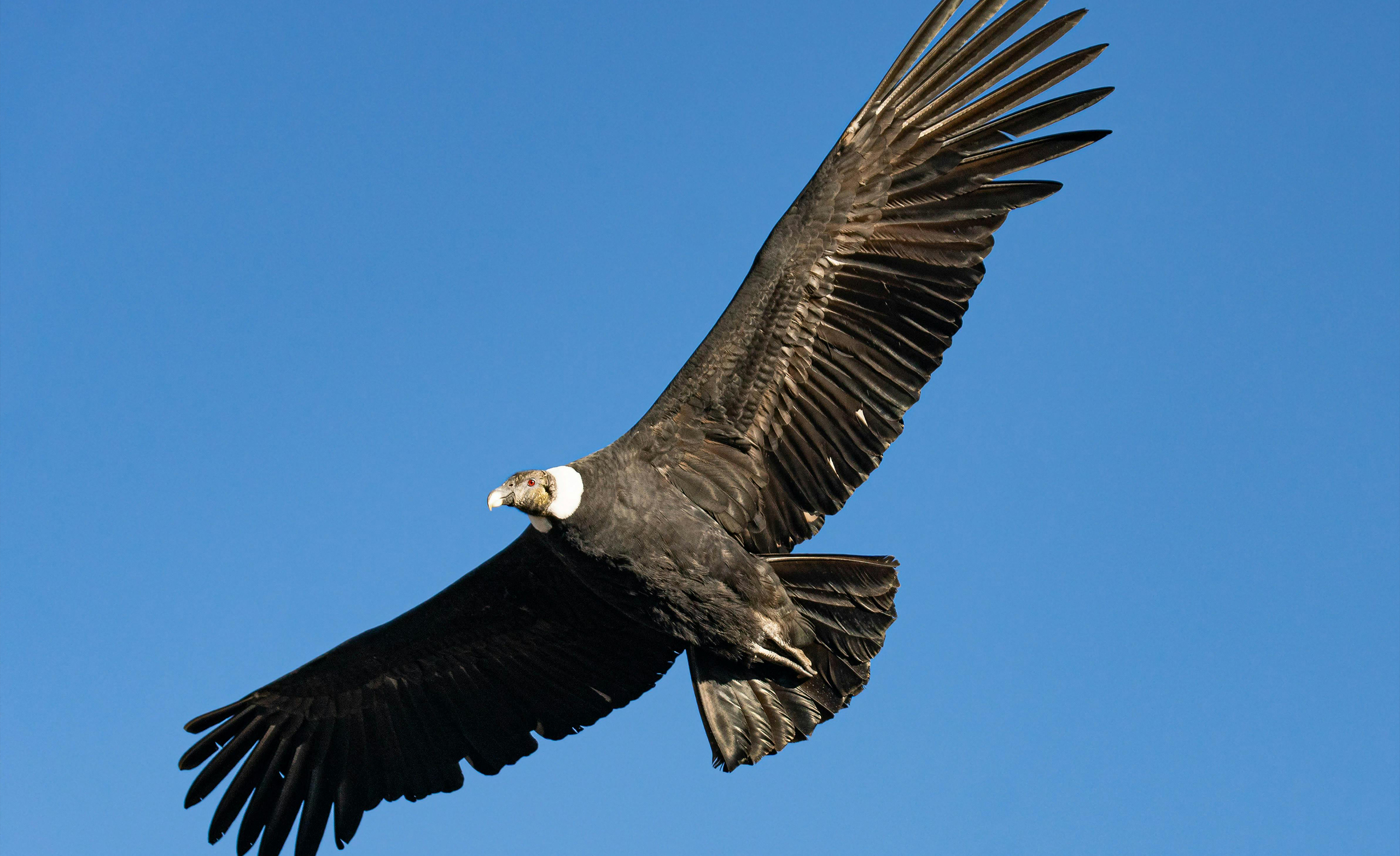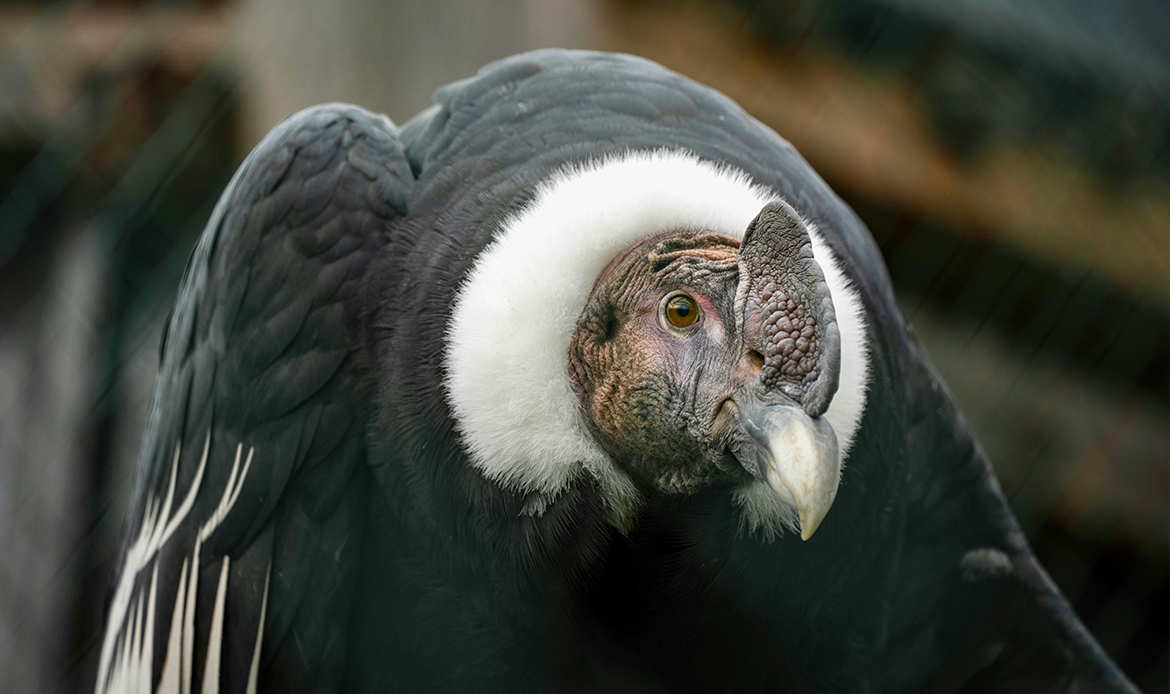
From Mountains to Margins: The Plight of the Andean Condor
The majestic Andean Condor, South America’s iconic vulture species, faces unprecedented challenges in its fight for survival across the continent’s mountainous regions. As one of the largest flying birds globally, the Andean Condor has long symbolized power, freedom, and the untamed wilderness of the Andes Mountains. However, their population has experienced a dramatic decline in recent decades, raising concerns among conservationists and wildlife experts.
Habitat and Physical Characteristics
The Andean Condor’s natural habitat spans the entire length of the Andes Mountains, from Venezuela to Tierra del Fuego. These magnificent birds can be found soaring at altitudes of up to 16,000 feet, where they ride thermal currents with their impressive wingspan that can reach up to 10.5 feet. Their distinctive appearance, characterized by a black plumage, white collar, and bare head, makes them easily recognizable among other bird species in the region.
Male Andean Condors are larger than females and can be identified by their prominent caruncle (fleshy wattle) and dark red comb on their heads. These physical characteristics play essential roles in courtship displays and social interactions within their communities. Their specialized features, including keen eyesight and powerful beaks, make them perfectly adapted to their role as nature’s clean-up crew.
Conservation Status and Threats
The International Union for Conservation of Nature (IUCN) currently lists the Andean Condor as Vulnerable, with population numbers continuing to decline. Several factors contribute to their increasingly precarious situation:
- Habitat Loss: Urban expansion and agricultural development have significantly reduced suitable nesting sites and feeding grounds for the Andean Condor population.
- Human Persecution: Despite legal protections, these birds face ongoing threats from hunting and poisoning, often due to misconceptions about their impact on livestock.
- Lead Contamination: The ingestion of lead ammunition fragments from animal carcasses poses a severe health risk to these scavenging birds.
- Climate Change: Shifting weather patterns and environmental conditions affect the availability of thermal currents necessary for their efficient flight patterns.
Cultural Significance
Throughout history, the Andean Condor has held profound cultural significance for indigenous peoples across South America. In many pre-Columbian cultures, particularly among the Inca, the bird was revered as a sacred messenger between the earthly realm and the heavens. Today, it remains a powerful national symbol, appearing on the coats of arms of several Andean nations, including Bolivia, Chile, Colombia, and Ecuador.
Conservation Efforts and Success Stories
Various conservation initiatives have been implemented to protect and restore Andean Condor populations:
- Captive Breeding Programs: Several successful breeding programs have helped boost population numbers in critical areas.
- Release Projects: Carefully planned reintroduction efforts have established new colonies in historically occupied regions.
- Education Campaigns: Public awareness programs help combat negative perceptions and promote understanding of the species’ ecological importance.
- Protected Areas: The establishment of conservation zones provides safe havens for breeding pairs and their offspring.

Ecological Importance
The Andean Condor plays a crucial role in maintaining ecosystem health through their scavenging behavior. By consuming carrion, they help prevent the spread of diseases and recycle nutrients back into the environment. Their presence also serves as an indicator of ecosystem health, making them valuable monitors of environmental change.
Future Prospects and Challenges
While conservation efforts have shown promising results in some areas, the future of the Andean Condor remains uncertain. Climate change continues to pose new challenges, while human activities increasingly encroach upon their habitat. The species’ naturally low reproductive rate—typically producing only one chick every two years—makes population recovery a slow process.
Call to Action
Preserving the Andean Condor requires a coordinated approach involving:
- Strengthened Legal Protection: Enhanced enforcement of existing conservation laws and implementation of new protective measures.
- Habitat Preservation: Protection of critical nesting sites and feeding grounds through land conservation initiatives.
- Research Support: Continued study of population dynamics, behavior patterns, and adaptation to environmental changes.
- Community Engagement: Involvement of local communities in conservation efforts through education and economic incentives.
Conclusion
The road ahead for the Andean Condor’s conservation is challenging but not impossible. Success depends on continued international cooperation, sustainable resource management, and public support for conservation initiatives. As we work to protect these magnificent birds, we also preserve an irreplaceable part of South American natural and cultural heritage for future generations.
The plight of the Andean Condor serves as a reminder of our responsibility to protect endangered species and their habitats. Through dedicated conservation efforts and increased awareness, we can help ensure these magnificent birds continue to soar above the Andean peaks for generations to come.
